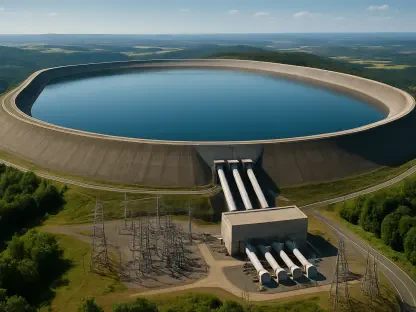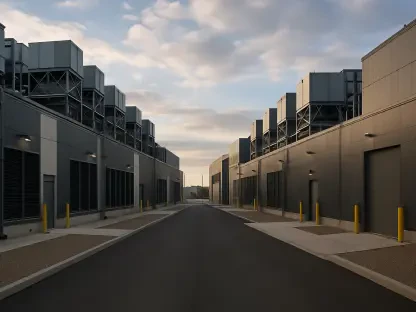Winnipeg’s ambitious new strategy aims to significantly reduce greenhouse-gas emissions from city-owned buildings, targeting a net-zero emissions goal by 2050. The proposed Building Emissions Reduction Strategy, which requires city council approval, outlines a substantial investment plan focusing on initial planning, monitoring, and making efficiency improvements across city infrastructure. With detailed preliminary costs and long-term projections, this comprehensive approach intends to transform the environmental footprint of Winnipeg’s urban structures.
Initial Investments and Costs
The city report estimates an initial expenditure of nearly $6.2 million to implement essential changes, including $2.5 million dedicated to installing advanced building management systems. These systems are designed to optimize heating and lighting schedules, thereby minimizing energy waste. This strategic move is set to enhance the city’s ability to monitor and manage energy consumption more effectively.
However, this initial phase is only the beginning. The broader strategy proposes an additional $35.8 million in specified building retrofits by 2030. When factoring in potential interest on these investments, the total cost could escalate to $39.3 million. These investments underscore the city’s commitment to substantial, long-term changes that aim not only for efficiency but also for sustainability.
Retrofit Proposals
Energy analyst Melanie Chatfield emphasized that the success of the 2050 emissions goal hinges on sufficient and well-planned budgeting. Retrofit projects are aimed at major updates to key structures, including the Winnipeg Police Service headquarters ($8 million), the city hall complex ($8 million), and the North End sewage treatment plant ($5 million). Although the police headquarters underwent a significant renovation in 2016, its boiler system remains outdated, highlighting the urgent need for modern energy-efficient solutions.
Similarly, the North End sewage treatment plant, currently undergoing a monumental $3-billion upgrade, lacks efficiency improvements for its older sections. Chatfield expressed concern over these gaps, noting that addressing them is pivotal to achieving the city’s emissions reduction targets.
Key Areas for Upgrades
The planned retrofits will focus on crucial upgrades in heating, ventilation, air conditioning systems, lighting, and insulation. There is also potential for integrating greener power sources to further enhance the environmental benefits of these upgrades. The report suggests these improvements could ultimately save the city approximately $934,746 annually in utility costs—demonstrating the fiscal benefits of energy efficiency.
Nevertheless, these savings are complicated by the federal removal of carbon taxes and a proposed increase in Manitoba Hydro electricity rates. Chatfield acknowledged that the removal of the carbon tax weakens the economic rationale for extensive energy retrofits. Despite this setback, she insisted that necessary updates should aim for maximum energy efficiency to align with the overall strategy.
Focus on Oldest Buildings First
City Councilor Ross Eadie, chairman of the council’s environment committee, advocates for prioritizing the oldest buildings in retrofit efforts to achieve significant emissions reductions early on. Eadie remains optimistic that as large-scale projects progress, such as the $3-billion upgrade at the North End sewage treatment plant, the city will attain more financial flexibility to support this ambitious strategy towards the 2050 goal.
Eadie views the proposed initial funding of $2.2 million in capital spending and $1.2 million in operating dollars in subsequent years as a positive first step. This initial funding sets the groundwork for broader, impactful measures necessary for the city’s long-term sustainability.
Support from Environmental Groups
Environmental groups have expressed strong support for Winnipeg’s environmental ambitions. Laura Cameron, director of programs and strategy at Manitoba’s Climate Action Team, praised the city’s proactive approach. Cameron suggested that interim emission-reduction targets be added to ensure consistent progress, emphasizing the importance of early budgetary support to sustain the strategy.
Councilor Brian Mayes echoed Cameron’s sentiments, stressing that the realization of the 2050 target is heavily dependent on the council’s ability to secure the necessary funding. Mayes noted that while past council initiatives have been impressive, this strategy offers a clear and practicable starting point—signaling a commitment to tangible, incremental improvements.
Comprehensive Strategy for Long-term Impact
Winnipeg has unveiled an ambitious strategy to dramatically cut greenhouse-gas emissions from buildings owned by the city, with the goal of reaching net-zero emissions by 2050. The newly proposed Building Emissions Reduction Strategy, pending city council approval, lays out a robust investment plan centered on initial planning, real-time monitoring, and efficiency improvements throughout the city’s infrastructure. This comprehensive approach offers a detailed overview of both preliminary costs and long-term financial projections, reflecting a clear pathway to diminish the environmental impact of Winnipeg’s urban structures. This initiative signals Winnipeg’s commitment to sustainability and climate action, promising to transform its environmental footprint significantly. By targeting public infrastructures, the strategy not only aims to enhance energy efficiency but also to serve as a model for sustainable practices, positioning Winnipeg as a leader in environmental stewardship.









